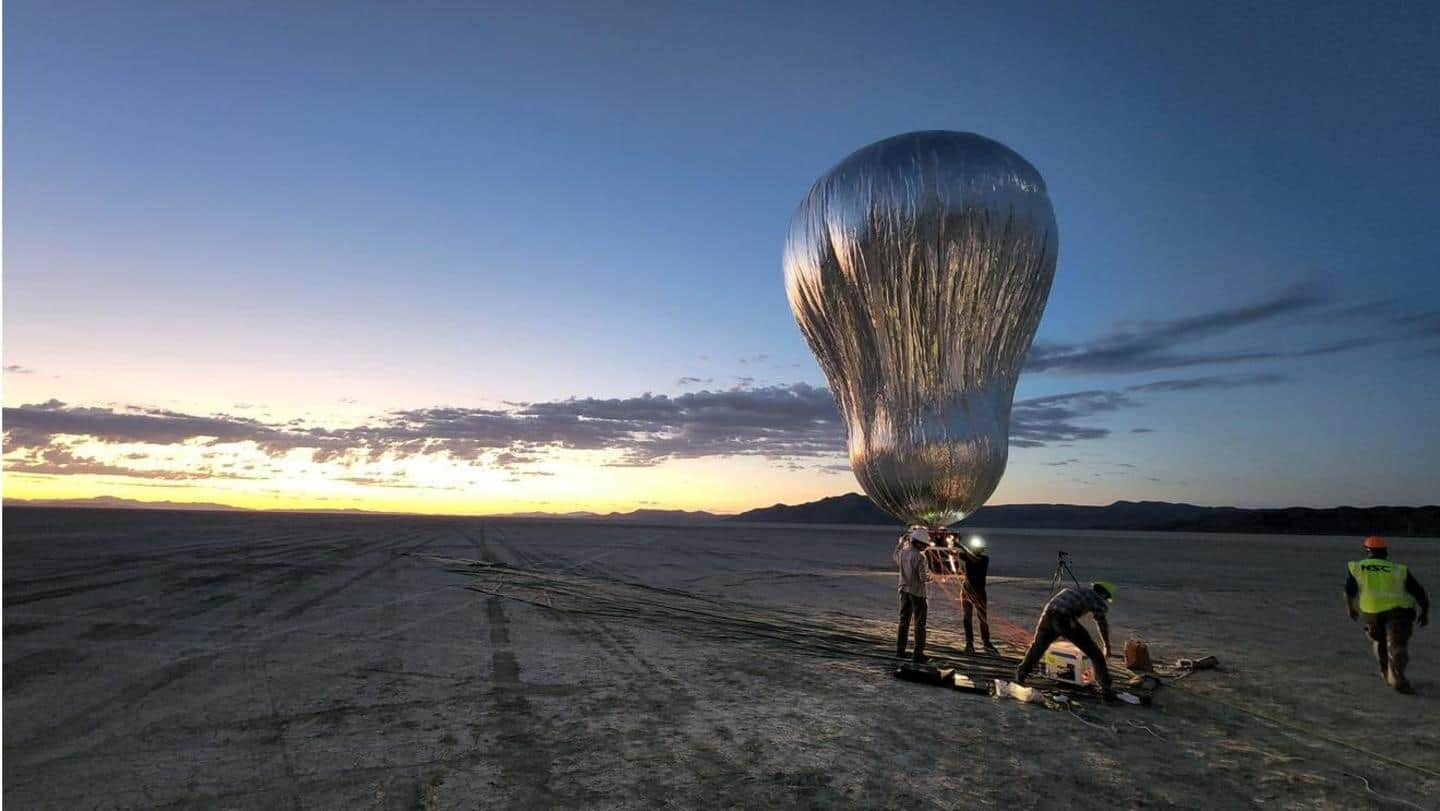
NASA's Venus aerobot prototype excels test flights in Nevada
What's the story
If the environment on Venus is not conducive for spacecrafts, can we try something else? Like a robotic balloon? Well, a team of scientists from NASA's Jet Propulsion Laboratory (JPL) and Near Space Corporation have devised a plan of sending an orbiter along with an aerial robotic balloon to probe Venus. The one-third scale aerobot prototype has successfully completed two test flights in Nevada.
Context
Why does this story matter?
Venus is known to have harsh conditions on the surface, which is why landing a spacecraft is a bad idea. However, because of its relatively thick atmosphere, stationing a spacecraft and balloon several miles above the surface is a better solution to study our neighbor planet. We have had balloon-borne missions to Venus in the past as well.
Previous missions
The former Vega spacecrafts measured 11.5-feet in diameter
Soviet Union's twin Vega spacecrafts were the former balloon-based exploratory missions targeted at Venus in 1985. The 3.6-meter wide balloons survived approximately 46 hours before their batteries drained. Vega 1 and Vega 2 made it evident that spacecrafts with similar design and better equipment might thrive the Venusian conditions longer. However, unlike the Vega twins, NASA's aerobot is constructed to swing between different altitudes.
Design
The aerobot has a 'balloon within a balloon' design
The flexible outer helium balloon houses a smaller balloon filled with pressurized helium gas. In order to gain altitude, the inner reservoir lets out helium gas to confer buoyancy and expand the outer balloon. Conversely, to dip lower ,the gas recollects at the inner chamber and causes the outer capsule to shrink. The aerobot can fly between 52-62km within the Venus atmosphere.
The mission
What is the role of the orbiter?
The 40-feet wide aerobot is designed to catch the winds in Venus' atmosphere and probe the planet for minimum of 100 days. It is equipped to analyze the chemical makeup of the clouds and pick up acoustic waves generated by venusquakes. The partner orbiter will receive signals from the aerobot and communicate them to Earth. It will also provide a complete view of Venus.
The test
The aerobot demonstrated 'controlled altitude flight'
The silver balloon rose over 1km above Nevada's Black Rock Desert. This particular altitude mimics the temperature and density conditions present 55km above Venus' surface. The success of the flight test is a crucial achievement as it validates the proposed concept. It proves that regions in Venus which were inaccessible to orbiters can now be investigated by balloon-based probes.
Prospect
Success of flight tests pave way for long-term robotic exploration
"We're extremely happy with the performance of the prototype. It was launched, demonstrated controlled-altitude maneuvers, and was recovered in good condition after both flights," said Jacob Izraelevitz, robotics technologist and JPL's principal investigator of the flight tests. "We've recorded a mountain of data from these flights and are looking forward to using it to improve our simulation models before exploring our sister planet."